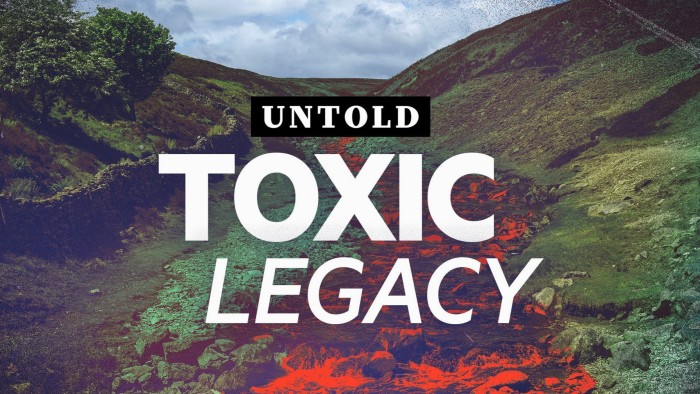Unlock the Editor’s Digest for free
Roula Khalaf, Editor of the FT, selects her favourite stories in this weekly newsletter.
The UK government is reconsidering whether to routinely test children for lead exposure following a two-year Financial Times investigation that revealed millions may be unknowingly at risk from the toxic metal.
The findings — published in the latest series of the FT’s Untold podcast series, Toxic Legacy — show that lead remains present in the UK’s homes, soil, drinking water and food. Yet there is still no national strategy to monitor or reduce exposure.
Decades of evidence linking lead exposure to a wide range of health problems — including lower IQ and behavioural issues in children — prompted bans on the use in domestic paint in 1992 and water pipes in 1969.
Through dozens of interviews with parents of children poisoned by ingesting lead paint or water contaminated by lead pipes in their homes, the FT has uncovered how the legacy of the metal’s past use continues to pose a significant, and often overlooked, risk to public health.
In response to the series, the Department of Health and Social Care said the UK National Screening Committee “is currently working on plans for a new review of screening children for lead poisoning and more information will be available in due course”.
They added it was “unacceptable that anyone in this country in the 21st century should fall victim to lead poisoning”.
Unlike other advanced economies, the UK has no mandatory screening programme to measure population-level exposure to lead.
In 2018, one of the reasons the UK decided against conducting nationwide screening of lead levels in children was because “the number of children affected in the UK is currently not known”.
Despite international studies suggesting that hundreds of thousands of British children may have elevated lead levels, the UK Health Security Agency (UKHSA) instead relies on a passive surveillance system, which depends on doctors to test children and then report elevated levels.
The health body received just 226 notifications of lead poisoning in 2023 — most of them from the area of Yorkshire and the Humber.
Leeds, which is in this region, is the only part of the country with a targeted programme to identify lead poisoning in children. The system — which alerts doctors to test for lead when checking a child’s iron levels — was introduced after the death a decade ago of a two-year-old boy who had ingested lead paint.
“Because we are actively looking for it, we are identifying more,” Avanish Tantry, the NHS paediatrician who designed the automatic alert system, told the FT, in the final episode of the series. “I suspect there’s a lot of lead poisoning in the country that is just running under the radar.”




